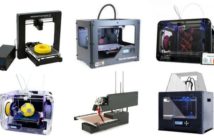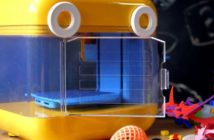Gregory Mark, founder of Mark Forg3d and co-owner of Aeromotions, introduces carbon fiber and composite 3D printing to the world with the Mark One. Familiar with carbon fiber construction and its process, he sought a better method for creating fully automatic, computer-controlled wings, the featured product sold by Aeromotion to racing enthusiasts around the globe.

Carbon Fiber 3D Printer Development
In an interview with Gian Paolo Bassi, vice president of research and development at SolidWorks Mark discussed the processes of constructing this one-of-a-kind carbon fiber 3D printer. The pre-production model with all of its iterations took about 8 months to complete, with the help of two separate teams. The first, an in-house team, designed the printer heads and focused on the mechanics of extrusion. The second team, which was subcontracted, was brought in to help with the overall machine design.
The Kinematic Coupling Feature
One of the greatest challenges, faced by the engineers, was the functionality of the kinematic coupling feature, which is designed to diminish time spent on platform calibration. Once the printer bed is leveled, preserving its settings will be effortless, and replacing the bed after removing a print will not require heavy adjustments, thanks to the magnetic, click-back functionality, which returns the platform to within 10 microns of its point of origin.
Fused & Composite Filament Fabrication
Kinematic coupling is an awesome feature, and will surely make the printing process much more pleasant, but even better is the Mark One’s fused and composite filament fabrication capabilities. Other than carbon fiber, it supports fiberglass, nylon, and PLA construction, which provides the flexibility of printing parts in PLA or nylon for testing and then adding carbon fiber composite, in a subsequent iteration, for strength.
High-Performance Parts & Prosthetics
While the appeal for greater strength coupled with the ease of production that comes with desktop 3D printing is sure to be appealing for anyone in high-performance manufacturing. The applications reach far beyond. The progress we will see in prosthetics and initiatives like Project Daniel, which led to the world’s first 3D-printing prosthetics lab and training facility will be incredible.



